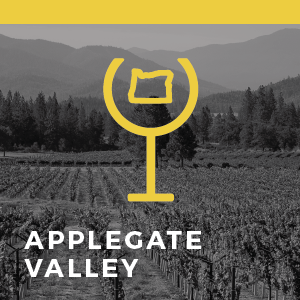McMinnville
Established: 2005
Total Area: 36,900 acres (14,900 ha)
Planted Area: 750 acres (305 ha)
Predominant Soils: Marine sedimentary, marine bedrock and volcanic
Predominant Varieties: Pinot noir, Chardonnay, Pinot gris, Riesling, Pinot blanc

McMinnville downloads

Presentation preview
About
The McMinnville AVA is contained within the Willamette Valley AVA, sitting in the Coast Range foothills just west of the city of McMinnville, approximately 40 miles (65 km) southwest of Portland. Geologically, the most distinctive feature in this area is the Nestucca Formation, a 2,000-foot (610 m) thick bedrock formation that extends west of the city of McMinnville to the slopes of the Coast Range. This formation is weathered sedimentary and volcanic soil sitting on top of marine bedrock, which affects the region’s ground water composition, forcing vines to struggle and produce complex fruit.
Compared to surrounding areas, McMinnville is, on average, cooler and drier, consisting of higher elevation vineyards (up to 1,000 feet (305 m)) that are resistant to frost. Vineyards situated on the more southerly facing sites take advantage of the cooling winds from the Van Duzer Corridor, a break in the Coast Range that allows cool Pacific Ocean air to flow through, thus dropping evening temperatures in the region, which helps to keep grapes retain their acidity as they ripen.
Pinot noirs from McMinnville typically exhibit a strong backbone of tannin with darker fruit flavors that are rounded out by spice, mineral and earth notes. White wines from this region are bright and fruit-forward.
Region History:
The McMinnville area has a long farming history that dates back to the mid-1800s when berry fields, tree fruits and livestock dominated. All that began to change when, in 1970, one of Oregon’s winemaking pioneers, David Lett, bought an old turkey processing plant in the city of McMinnville to house his winery. Soon after, winegrowers began planting vineyards and establishing wineries in the area and, in 1987, McMinnville held the very first International Pinot Noir Celebration. Held every July since, it’s a wildly popular three-day event where winemakers and enthusiasts from all over the world congregate for Pinot noir tastings, winery tours and seminars. The McMinnville AVA was established in 2005.











